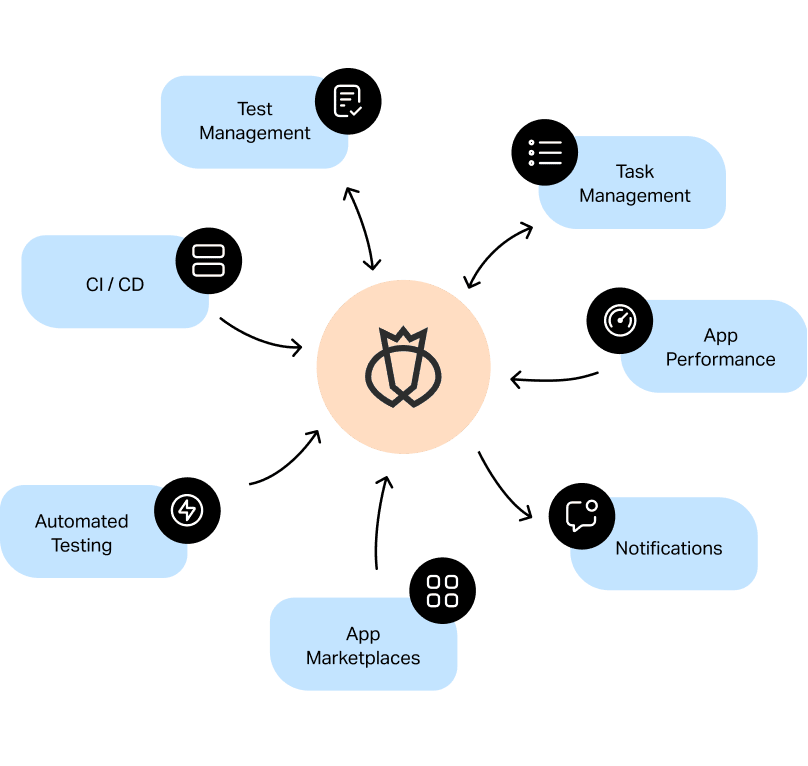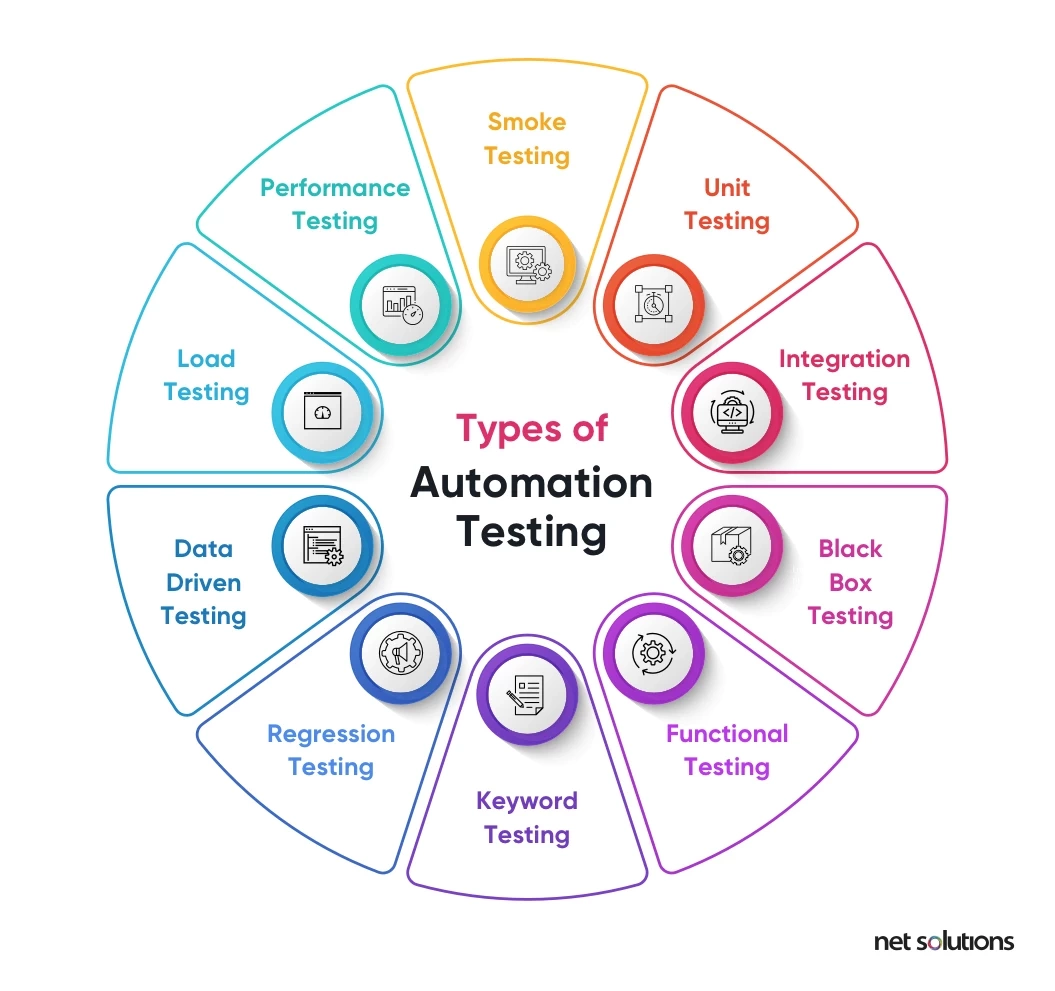Making Certain Success in Automation Evaluating: Trick Metrics, Difficulties, and Solutions Every QA Group Should Know
In the world of software quality control, the landscape of automation testing is ever-evolving, requiring a meticulous technique to guarantee smooth procedures. Key metrics serve as the compass leading QA teams with the substantial terrain of test automation, clarifying progress and areas for improvement. Nonetheless, difficulties impend huge, typically casting darkness on the course to success. By recognizing these obstacles and applying effective services, QA teams can browse with intricacies with skill. The trip to understanding automation screening is led with subtleties that call for an eager eye for monitoring, analysis, and continuous improvement. automation testing. As the market thrusts forward, the quest for optimal performance in automation testing remains a constant search, urging QA teams to equip themselves with the knowledge and techniques vital for victory.
Importance of Key Metrics
Understanding the relevance of crucial metrics is vital for assessing the efficiency and efficiency of automation testing procedures. Secret metrics act as measurable procedures that offer important insights right into various facets of the screening process, such as examination protection, examination implementation time, defect thickness, and test instance effectiveness. By analyzing these metrics, QA groups can identify traffic jams, ineffectiveness, and areas for enhancement within their automation testing structure.
One important aspect of crucial metrics is their ability to track progression and keep track of the total health of the screening process (automation testing). They make it possible for stakeholders to make enlightened decisions based upon data-driven insights, which can cause more effective screening strategies and much better source allocation. Furthermore, vital metrics can help teams established realistic goals, gauge the success of automation efforts, and show the ROI of automation screening efforts

Typical Challenges Faced
Obstacles generally run into in automation screening processes can considerably impact the overall efficiency and effectiveness of QA groups. One of the significant obstacles is the selection of the ideal examination situations for automation. Not all test cases appropriate for automation, and picking the incorrect ones can result in lost time and sources. In addition, preserving test scripts can be a challenging task, especially as the application undertakes frequent changes. Test manuscript maintenance requires continual updates and alterations to guarantee they reflect the current capability properly. One more common obstacle is the initial financial investment needed for establishing automation structures and devices. This can be a barrier for some companies, especially smaller ones with minimal budgets. Automation testing might not cover all elements of testing, such as use and customer experience screening, which still call for hands-on treatment. Getting rid of these obstacles needs appropriate preparation, calculated examination instance selection, durable maintenance procedures, ample resources, and a clear understanding of the constraints of automation testing.
Effective Solutions for Challenges
To attend to the challenges come across in automation testing, implementing reliable options is necessary for improving the efficiency and performance of QA groups. One essential solution is to spend in durable training programs for QA teams to guarantee they have the needed skills to effectively make use of automation tools. Training can link understanding gaps, boost understanding of automation structures, and improve scripting capabilities, ultimately bring about a lot more efficient examination development and execution.
An additional crucial solution is to develop clear communication networks within the QA team and with other stakeholders, such as programmers and job managers. Reliable communication assists in aligning assumptions, sharing progress updates, and without delay attending to issues or obstacles that may emerge during the automation screening procedure.

Monitoring and Evaluation Strategies
Applying efficient tracking and analysis strategies is critical for making certain the success and performance of automation screening processes. By making use of surveillance devices, QA teams can track the performance of examination manuscripts, determine bottlenecks, and pinpoint locations for improvement. Real-time monitoring permits quick detection of issues, enabling rapid reaction and resolution. In addition, examining examination results and metrics supplies useful insights right into the top quality of the software application being evaluated and the performance of the testing approach.
One trick technique in monitoring and analysis is making use of control panels that consolidate appropriate metrics and KPIs in an aesthetically accessible style. These control panels supply an extensive introduction of examination implementation status, test insurance coverage, defect patterns, and other important information. On a regular basis assessing and analyzing these dashboards can help QA teams make notified choices, focus on jobs, and maximize screening efforts.
Moreover, applying automated alerts and notifications based on predefined thresholds can improve positive surveillance and prompt intervention. By establishing alerts for performance discrepancies or examination failings, groups can address issues quickly and avoid them from escalating. In general, tracking and analysis strategies play a vital role in more information guaranteeing the efficiency and success of automation screening efforts.
Continual Renovation Approaches
Enhancing the efficiency of automation testing procedures necessitates the constant improvement of methods and strategies. One essential strategy to improving automation screening procedures is to carry out normal evaluations and retrospectives.

Final Thought
Finally, it is crucial for QA groups to comprehend the key metrics, obstacles, and services in automation testing to make sure success. By thoroughly monitoring and examining data, carrying out effective remedies to typical challenges, and continually enhancing techniques, QA teams can maximize their screening processes and supply premium software. Sticking to these practices will eventually lead to much more reliable and effective automation testing methods.
By analyzing these metrics, QA teams can recognize traffic jams, ineffectiveness, and locations for renovation within their automation testing framework.
In addition, key metrics can help teams established realistic goals, gauge the success of automation initiatives, and demonstrate the ROI of automation testing initiatives.
Challenges typically come across in automation testing processes can dramatically influence the overall effectiveness and performance of QA teams. Automation testing may not cover all elements of screening, such as usability and user experience testing, which still call for hand-operated intervention.In final thought, it is vital for QA groups this website to understand the essential metrics, difficulties, and options in automation screening to make certain success.